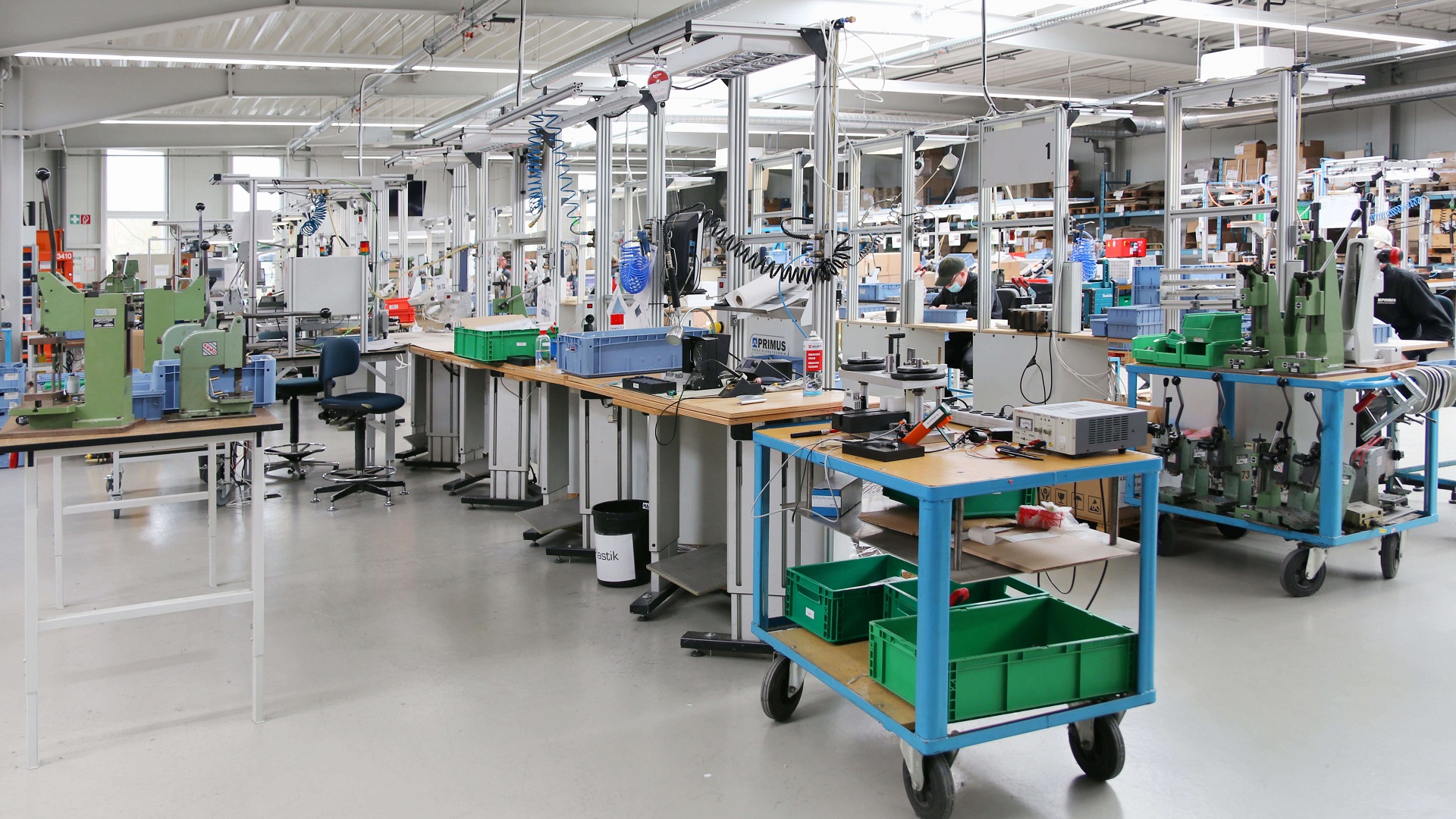Stocktaking sampling and perpetual inventory: less effort, more efficiency
Stocktaking is essential for inventory management and the annual financial statements, but are often time-consuming and cost-intensive. However, this does not have to be the case, as the German Commercial Code (HGB) in Germany and the Austrian Commercial Code (UGB) allow simplifications such as permanent full inventory and inventory sampling in addition to the full inventory on the reporting date. However, misinformation means that many companies continue to waste time and resources on stocktaking.
In principle, there are various methods for carrying out the stocktaking process. However, one of the aims of every inventory is to confirm inventory management and security to the auditor. The tried and tested method for this is the full inventory on the balance sheet date, in which the company must count, weigh or measure the entire stock once a year on the balance sheet date. As all stock has to be physically recorded, this method is very time-consuming and is usually associated with high personnel costs as well as disruptions and downtime in operations. To reduce these high costs, companies can use simplification methods.
Minimize pressure, reduce counting effort
The permanent full inventory spreads the inventory over the entire financial year. Stock levels are recorded continuously and 100% (manually). This method therefore stretches out the counting and overall effort over time and reduces the pressure in contrast to the full inventory on the reporting date. Nevertheless, the effort involved in continuously recording inventory changes in day-to-day business throughout the financial year should not be underestimated. This is not only a matter of time, but also of personnel and technical effort, which keeps the costs of a permanent full inventory high. Although the business does not usually have to be closed for stocktaking, manual processes in particular can disrupt day-to-day operations. Regularly updating the data through postings and adjustments also carries the risk of small errors going unnoticed. These then add up by the end of the year and are no longer traceable, which can have far-reaching and costly consequences. The overall cost therefore remains high.
Inventory sampling, on the other hand, reduces the counting effort considerably as it concentrates on a representative selection of stock. With the help of statistical procedures, only a fraction of the stock is physically counted. In practice, this can mean a reduction in counting effort of up to 99%. This also reduces interruptions to operations and production. This is because inventory sampling can often be completed within a few hours by the company's own employees alone and therefore hardly affects ongoing operations. As a result, personnel and overall costs are drastically reduced and the susceptibility to errors is greatly reduced due to the complete elimination of time pressure and external counting personnel.
Inventory simplification myth: what the HGB really says
A persistent misconception in connection with inventory sampling is that it requires separate approval from the tax office. Inventory sampling is directly defined as a permissible simplification in HGB §241 para. 1. This means that this method is explicitly mentioned in the law and recognized as an alternative to the full inventory. It is based on statistical methods that are used to count only a representative sample of the stock in order to draw conclusions about the total stock.
The permanent full inventory, on the other hand, is not directly anchored in the HGB as an independent simplification. It is indirectly recognized through the reference to the principles of proper accounting (GoB). The HGB (Section 241 (2)) also permits a permanent inventory during the financial year if the inventory value can be assessed at the end of the financial year using an appropriate procedure (extrapolation/back calculation).
Important principles for reliable stocktaking
All stocktaking simplifications require reliable inventory management in order to ensure completeness and to be able to comply with limits. An IT-supported warehouse system is therefore essential for both the permanent full inventory and the inventory sampling. The software used for inventory sampling must also be certified in order to meet the statistical requirements. The permanent full inventory also requires a so-called stock ledger in which the receipts and issues are documented.
 However, even if these requirements are met, many companies still have concerns as they regard a complete count as the benchmark for correct inventory management. This is because, in principle, the assigned auditor must approve any change to the inventory form, which can present an additional hurdle. In fact, the auditor must provide valid arguments if he rejects an inventory change despite all the requirements. In doing so, they are subject to the principle of moderation and proportionality, which states that the auditor's decisions must be proportionate for the company. In practice, it has been shown that inventory sampling is at least as reliable as other (full) inventory procedures.
However, even if these requirements are met, many companies still have concerns as they regard a complete count as the benchmark for correct inventory management. This is because, in principle, the assigned auditor must approve any change to the inventory form, which can present an additional hurdle. In fact, the auditor must provide valid arguments if he rejects an inventory change despite all the requirements. In doing so, they are subject to the principle of moderation and proportionality, which states that the auditor's decisions must be proportionate for the company. In practice, it has been shown that inventory sampling is at least as reliable as other (full) inventory procedures.
Possibilities and limits
In general, there are only a few limits to the use of simplifications such as inventory sampling. For example, warehouses with a high level of uncertain turnover and high fluctuations in stock levels are often not directly suitable for inventory simplification, regardless of the method chosen. These can be workshops, production facilities, picking zones or material- and raw material supply warehouses. In such cases, companies have the option of combining several inventory and simplification procedures; they do not have to decide on a single inventory method for the entire warehouse. For example, an automated high-bay warehouse can be checked using inventory sampling with sequential testing, while a less structured area, such as a production warehouse, can be checked using full inventory or permanent full inventory. However, the aim should always be to use the most efficient method - i.e. inventory sampling. Companies that already carry out a permanent full inventory are already well placed to switch to (software-supported) inventory sampling.
Modern tools: Switch now, save immediately
Ultimately, the choice of the right inventory procedure depends on the individual circumstances of the company. The fact is, however, that there is a lot of misinformation and misunderstandings surrounding stocktaking and simplification procedures. It is therefore worthwhile for companies to stay well informed, seek advice and switch to modern tools. These can usually be implemented quickly and easily. For example, the software developer and supply chain expert REMIRA offers a smart software solution for inventory optimization. The software-as-a-service solution from the Dortmund-based company supports all legally permissible statistical procedures and is certified in accordance with the IDW PS880 auditing standard, among others. It also has a TÜV data protection certificate and meets the requirements of ISO 27001. Smart tools like this not only make stocktaking easier, but also contribute to the quality of inventory management during the year - and therefore save money and resources in the long term.
Checkbox: Advantages of inventory sampling
- Minimal counting effort
- Lower error rate
- Significant cost reduction
- No external personnel
- No stock closures
- High stock quality
99% less counting effort during stocktaking?!
We'll show you how! If you are interested in inventory sampling or are still unsure whether it is suitable for your company, we will be happy to help you without obligation and answer all your questions.



